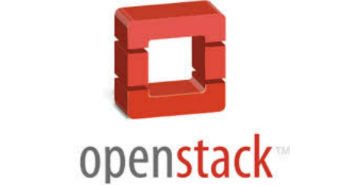The OpenStack community has been making waves in the telecommunications sector recently, with support coming from multiple big name organizations and service providers deploying OpenStack technology within their networks. As the trend continues, it is important to examine the factors that are making OpenStack the “next big thing” for telcos, as well as what the future will hold for the platform and its supporters.
Why is OpenStack gaining so much traction with telcos?
Before looking to the future, many companies are wondering what elements and conditions allowed OpenStack to come this far in the first place. For telecom blogger Mark Morales, the answer comes down to simple economics: OpenStack is a more cost-effective solution.
Today’s service providers are struggling to support ever-expanding demands from both consumers and enterprises, including the need to transmit and store increasing amounts of data. Morales noted that as the Internet of Things grows, these data throughputs will only rise alongside user requirements. Although other solutions can provide adequate support for boosted data traffic levels, OpenStack does so in a cost-efficient manner that other technologies just can’t match. Morales stated that other top solutions came in at three to five times more expensive than OpenStack deployments.
Furthermore, designer and developer Murray Mcdonald pointed out that OpenStack provides the scalability and flexibility enabling service providers to avoid vendor lock-in and create the robust, varied infrastructure they need by marrying different systems.
“It’s hard to know if the platform you have chosen will remain cost-competitive in the cloud marketplace,” Mcdonald stated. “Knowing that there are multiple vendors to choose from, and that your software development efforts will remain portable between vendors just makes sense.”
Nick Barcet, vice president of products at eNovance, noted that OpenStack’s unique features and functionalities make it a beneficial platform to leverage within telecom networks. This includes the solutions’ inherent scalability, allowing service providers to grow or shrink their offerings to match service peaks. Additionally, OpenStack’s lack of licensing fees provides additional cost savings.
“Because there are no licensing costs, you are free to define your offering and compete at whatever level you want,” Barcet said. “This is a unique feature in the industry, as all other offerings are either very expensive in terms of licensing – therefore blocking you out of some types of market – or limited in terms of back-end [integration] – therefore not allowing you to give the level of offering you want.”
The future of OpenStack: The community continues to expand
As OpenStack continues to permeate the telecom sector, its community of users and supporters is poised to stay on its current path of growth.
Last June, Mirantis’ marketing vice president David Fishman noted that the OpenStack community – which was just under three years old at the time – boasted nearly 10,000 members across 100 countries. Their efforts were supported by a foundation of over 200 companies. These numbers have considerably grown since then, as more and more telcos and technology organizations join the movement.
Eucalyptus CEO Mårten Mickos stated that key market leaders are showing their OpenStack support, prompting others to follow suit. This includes Red Hat, which is leveraging OpenStack software for a new product line, and RackSpace, which is currently running a public cloud with OpenStack support. Furthermore, HP and IBM are also throwing their hats into the OpenStack ring, and business leaders who previously utilized Microsoft or VMware solutions are increasingly seeking to try OpenStack systems as an alternative.
The OpenStack community is expanding on a global scale as well. Chinese multinational telecom service and equipment provider Huawei Technologies recently announced plans to contribute to OpenStack’s efforts, thereby “improv[ing] open source cloud computing code to bring the most efficient bottom lines to telecom providers with the help of open source cloud computing technologies.”
Overall, OpenStack vital statistics – including everything from community members, code commits and number of deployments – doubled last year, and OpenStack Foundation executive director Jonathan Bryce said there is no end in sight for continued growth this year.
“If momentum is any indication, 2014 is poised to be a defining year for OpenStack,” Bryce stated.
OpenStack’s future plans
So how will the OpenStack Foundation and community keep this trend up in the long term? At the most recent OpenStack Summit, community leaders discussed the areas of the group that are rapidly maturing and will continue to expand the technology and its supporters’ reach. These included users, software and an increasing focus on the cloud.
According to Bryce, the number of organizations that have been implementing OpenStack systems is “a turning point” for the group. New users are touting the benefits that their installations have brought, and existing community members are growing their service footprints and support. This includes both large, well-known enterprises as well as smaller businesses, showing the versatility OpenStack has to offer.
“We don’t just have users,” Bryce noted. “We have advocates. They’re users, developers, operators and vendors. We have community members. They’re engaged. And they’re changing how IT is done.”
Engineer Lakshmi Narasimhan Parthasarathy noted that as OpenStack support and deployments continue throughout the telecom industry, the technology is poised to become the new standard. Cloudyn’s Shay Asher, reporting on the recent OpenStack summit, echoed Parthasarathy’s view.
“The fact OpenStack is already strongly backed by an impressive amount of both big and small companies indicates a strong momentum for OpenStack to become the standard for the enterprise private cloud and marks a shift away from proprietary technologies such as VMware, to community-driven open source solutions such as the OpenStack cloud,” Asher wrote.

What will the future hold for OpenStack in the telecom sector?
ABOUT AUTHOR
